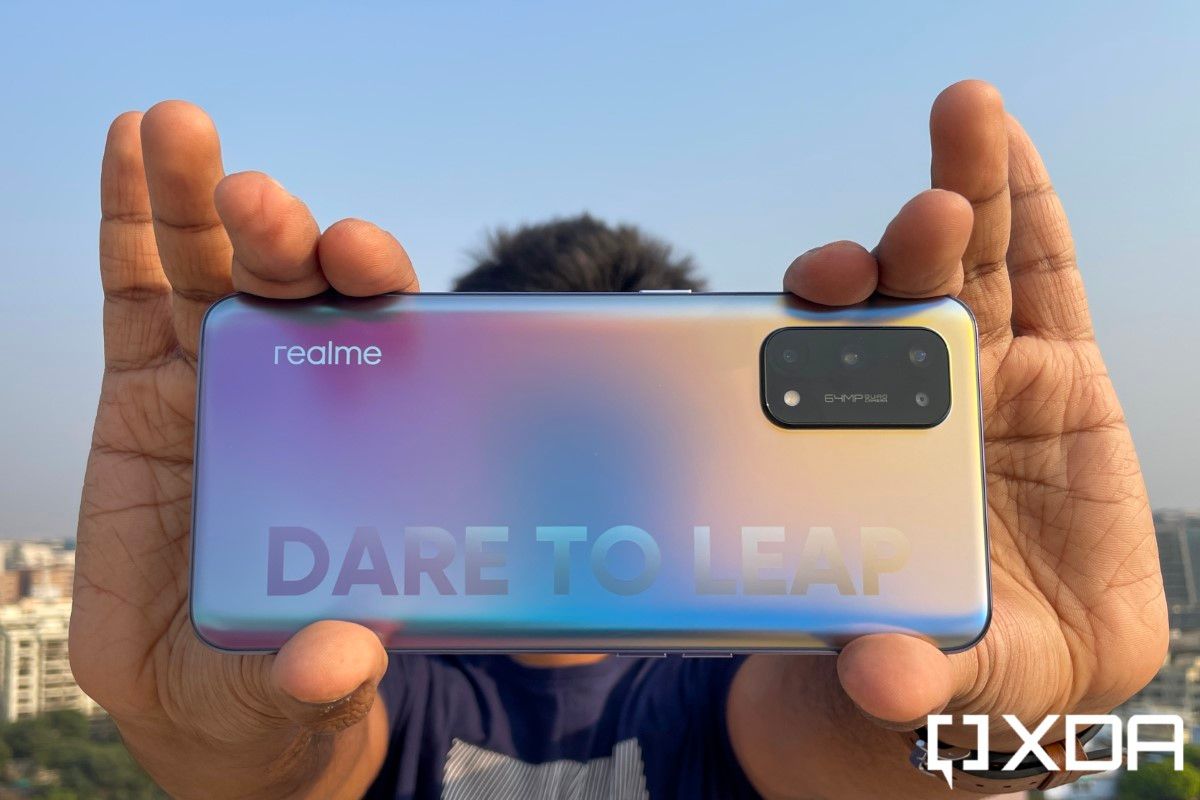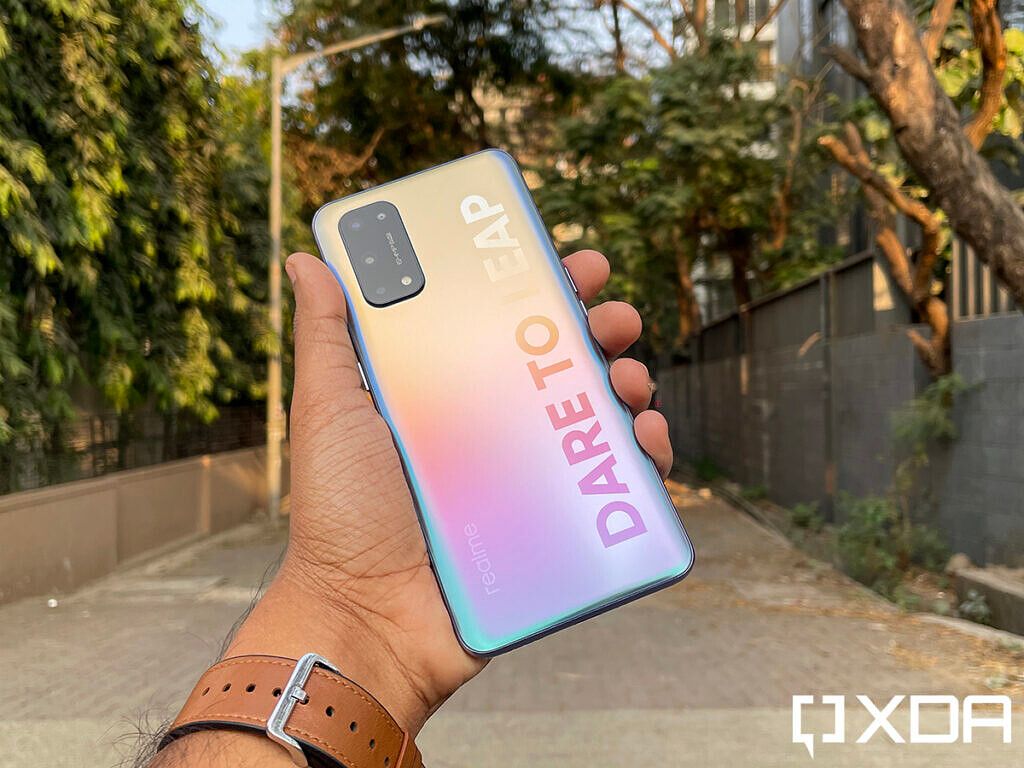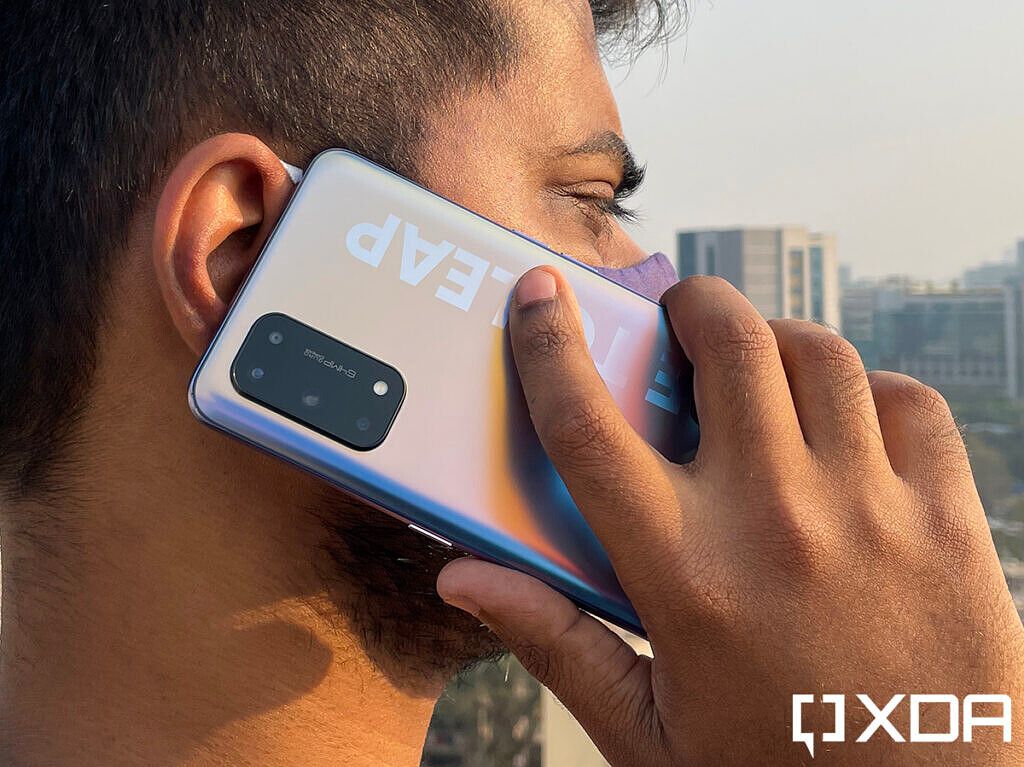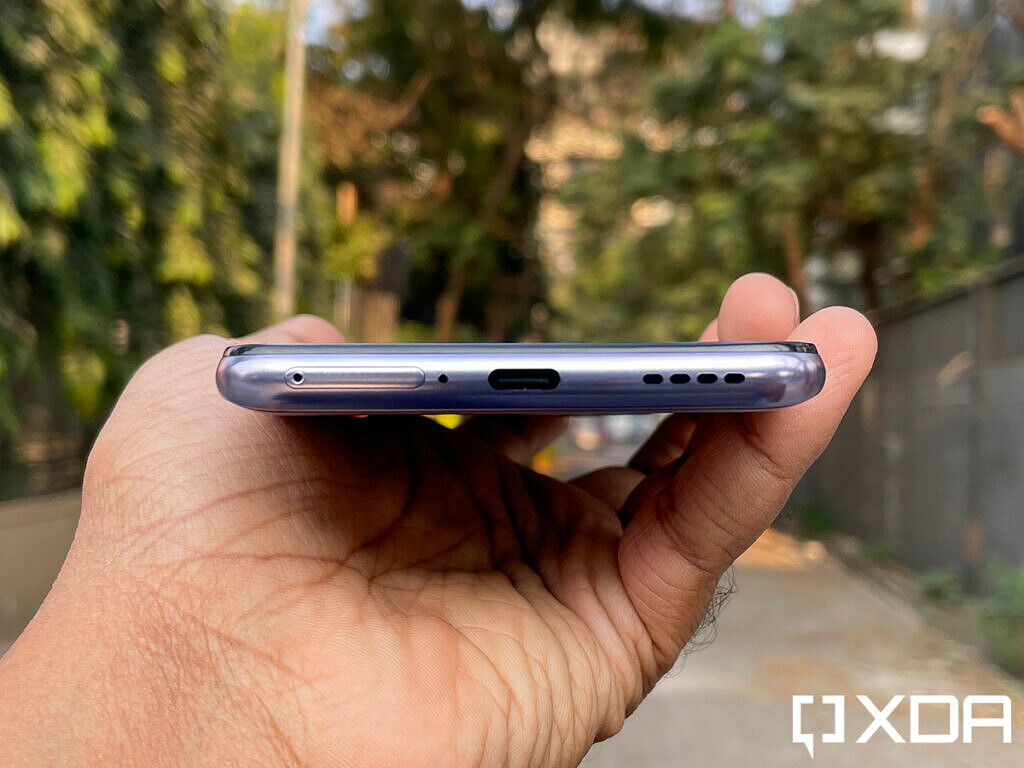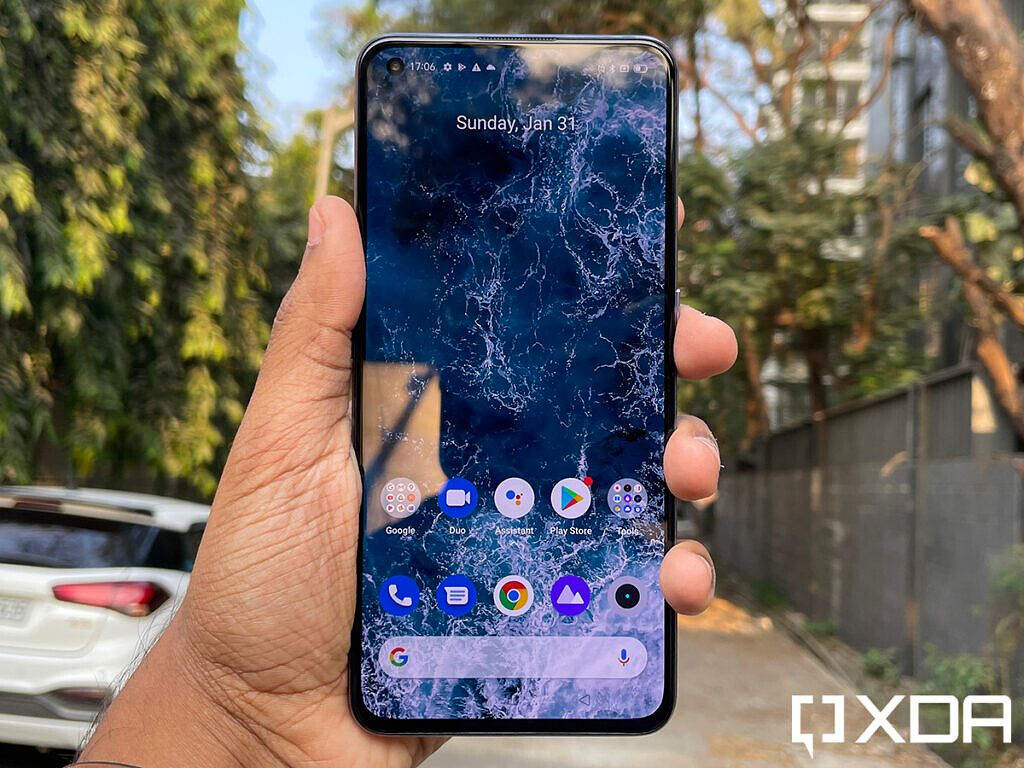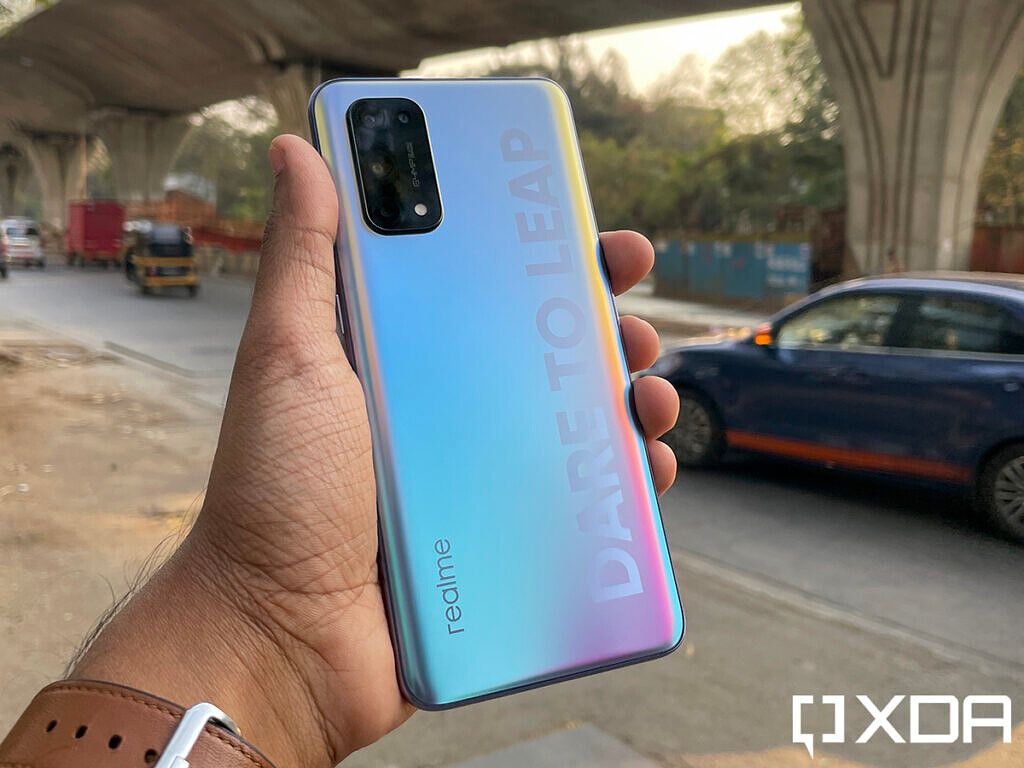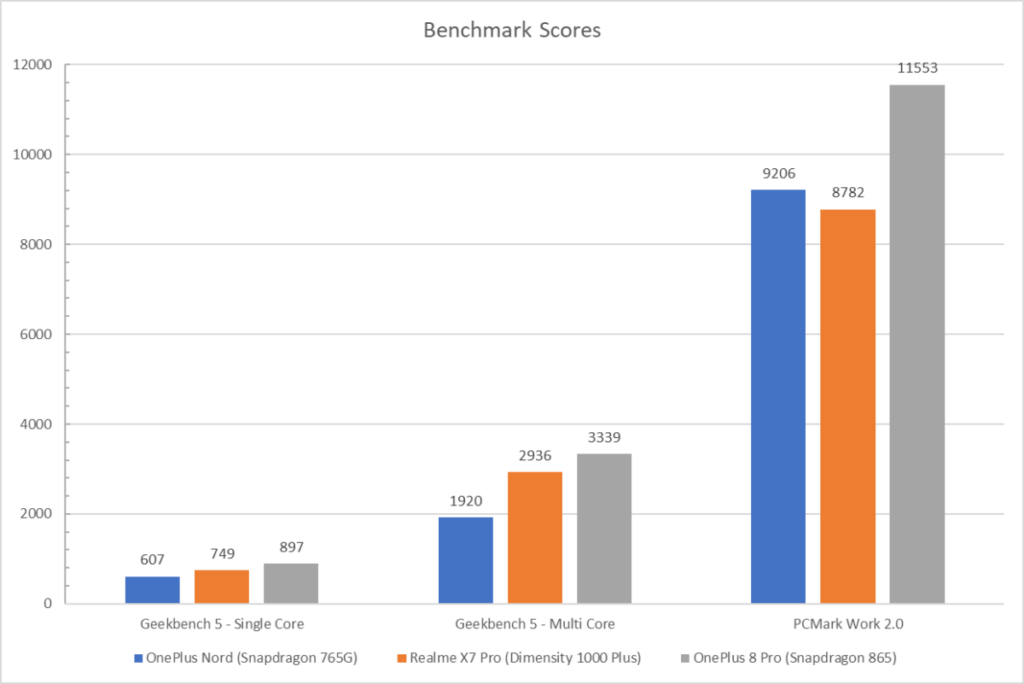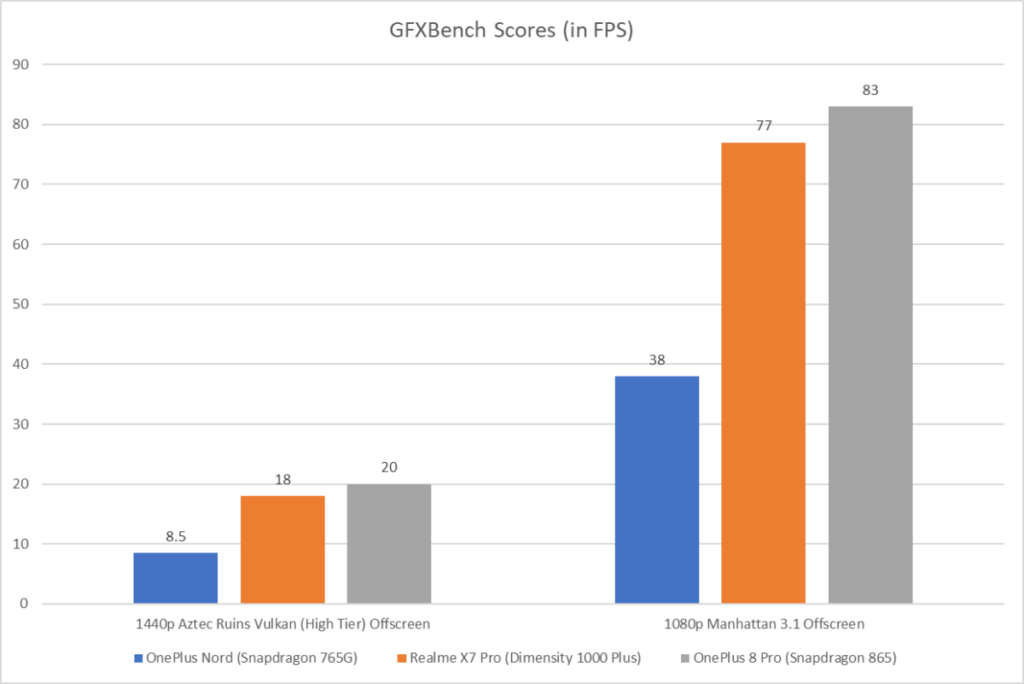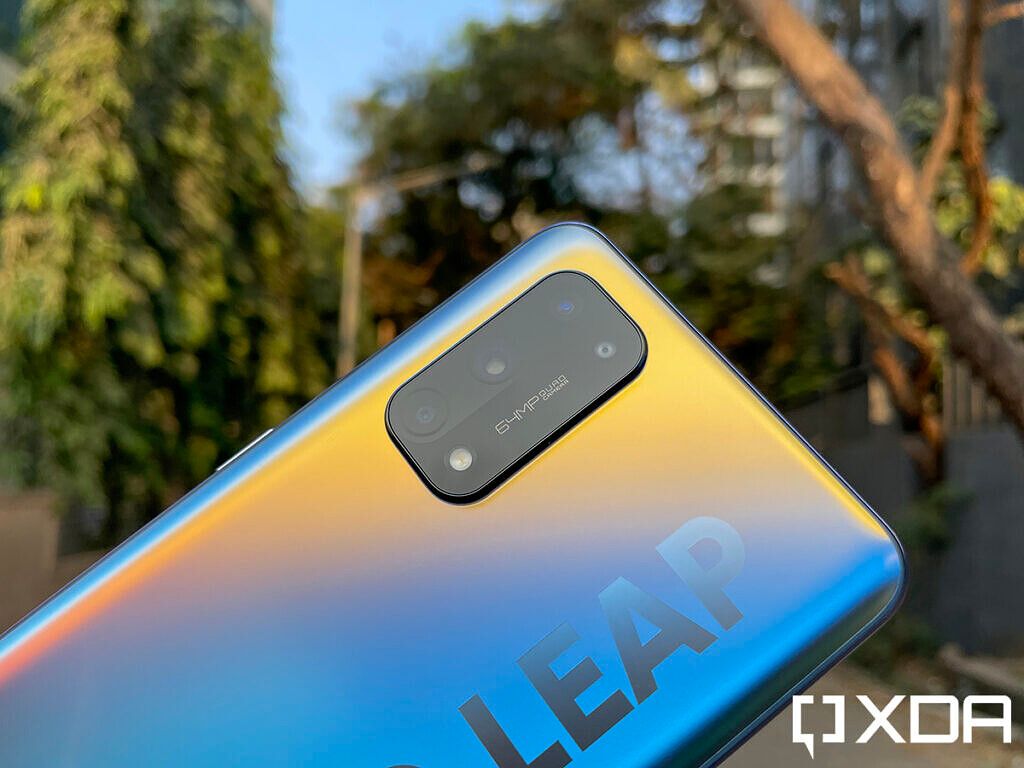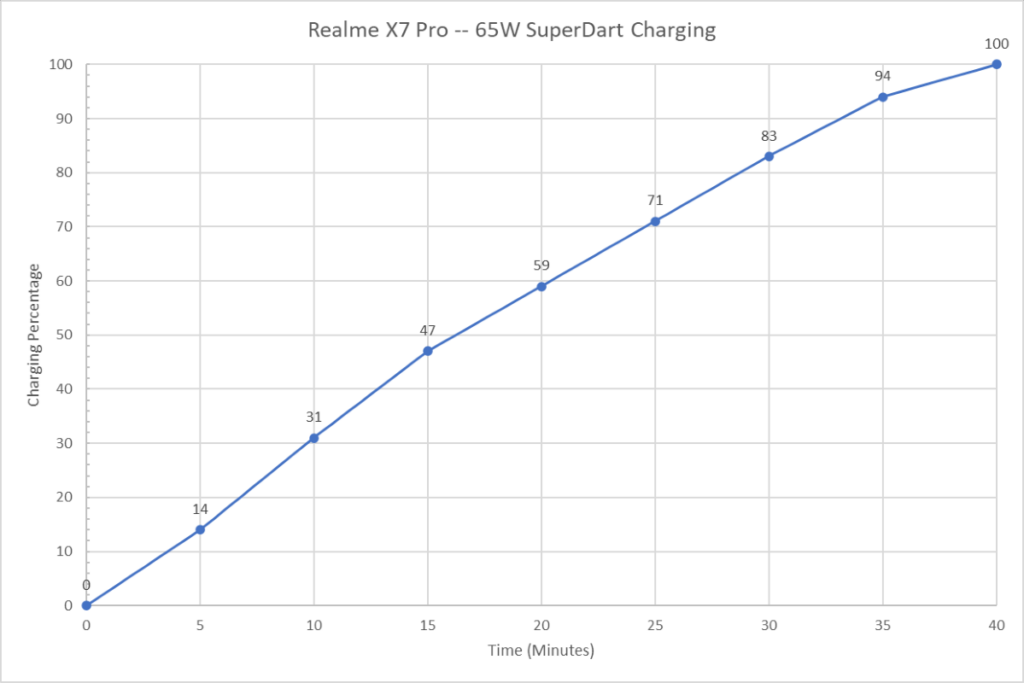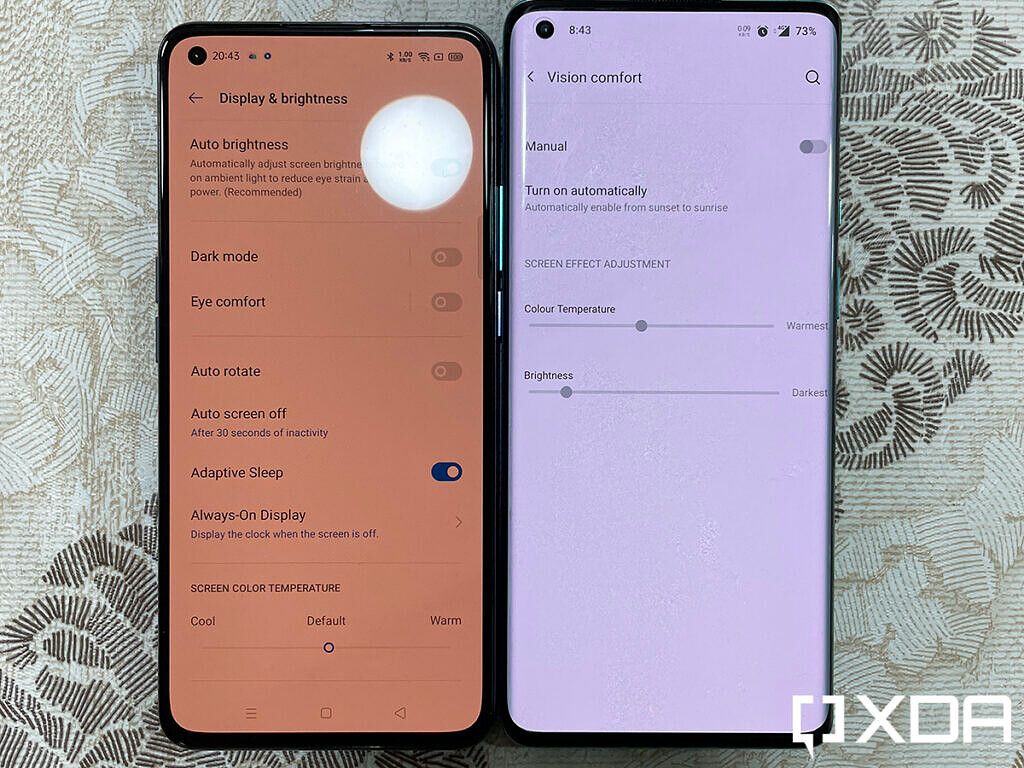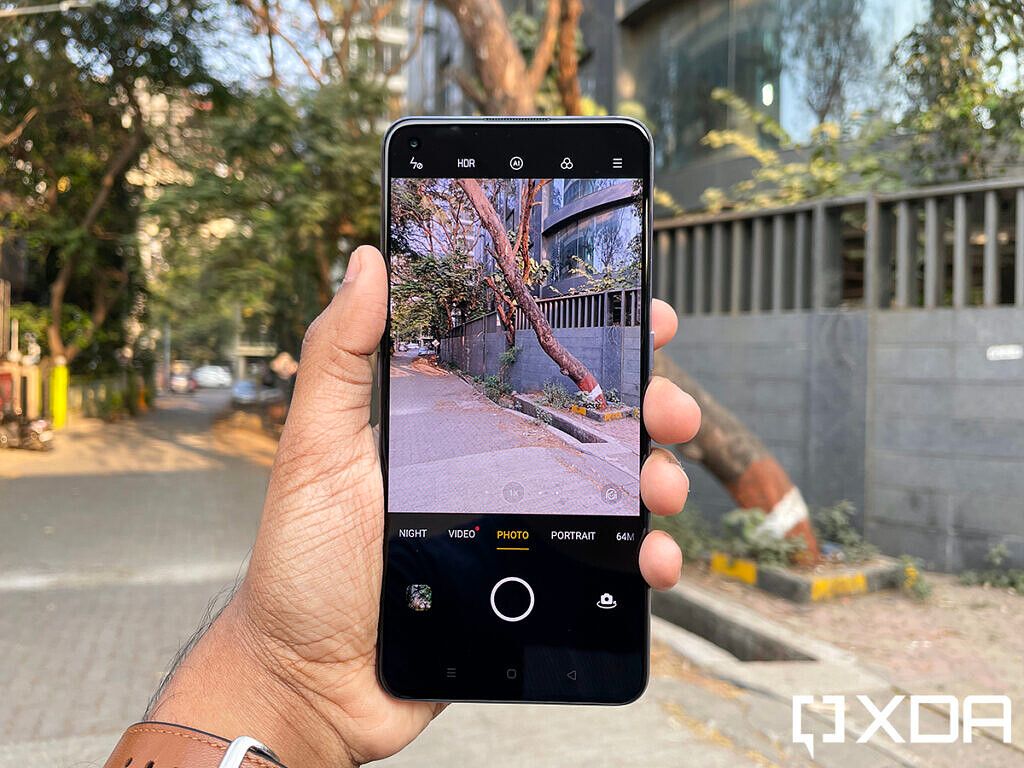Realme entered the smartphone scene a few years ago, but in the past few years, it has recorded some exceptional growth across the globe. While a good majority of its smartphones target the budget and mid-ranges, Realme also frequently dabbles in making affordable flagships and upper mid-range smartphones. The Realme X7 Pro launched in China last year, but now the company has brought the phone to the Indian market, giving us a chance to try out this affordable flagship powered by the MediaTek Dimensity 1000+ SoC.
Realme X7 Pro: Specifications
|
Specification |
Realme X7 Pro |
|---|---|
|
Build |
|
|
Dimensions & Weight |
|
|
Display |
|
|
SoC |
MediaTek Dimensity 1000+:
ARM Mali-G77 MC9 GPU |
|
RAM & Storage |
|
|
Battery & Charging |
|
|
Security |
In-display fingerprint scanner |
|
Rear Camera(s) |
|
|
Front Camera(s) |
32MP selfie camera, f/2.45 |
|
Port(s) |
USB Type-C |
|
Connectivity |
|
|
Software |
Realme UI based on Android 10 |
About this review: Realme India loaned us the Realme X7 Pro for review. This article is after five days of usage. Realme did not have any inputs in this article.
Realme X7 Pro: Design
Glass slab smartphones are a dime a dozen in the market, and we're at a point where it becomes difficult for a phone to stand out from the crowd. There are a few CMF (Colors, Materials, and Finish) combinations an OEM can try, but in the end, there are only so many options. True to its company branding, the Realme X7 Pro dares to leap with a bold branding printed underneath the glass back. The words "DARE TO LEAP" practically scream across the length of the phone in marketing materials, followed by a comparatively-subdued-yet-prominent "realme" on the other edge. But when I picked up the phone in my hand, the visible effect felt much more mellow than I had honestly expected.
The Fantasy color variant of the Realme X7 Pro has a smooth matte glass back that reflects light back in different hues depending on the angle it hits the back. As a result, you get different shades of yellow, orange, pink, sea green, and light blue, shimmering through as you twist and turn the phone around. The branding areas are negative zones that do not have the same color effect, so it is much easier to forget that those big letters do exist on the back. I was really opinionated when I saw the branding on marketing materials, but with the actual phone now in front of me, I do agree that it does not stand out as strongly as I presumed it would. I still wish the phone was devoid of it and Realme had just stuck to playing around with the colors. But others around me liked the overall effect, so Realme's leap of faith might just pay off.
Holding and handling the Realme X7 Pro is a comfortable experience, especially for someone who grew used to holding the OnePlus 8 Pro. It's a smaller and fairly lighter phone with a flat display, all three of which were welcome changes. The Realme X7 Pro has a polycarbonate mid-frame that has a finish similar to the OnePlus Nord — if you aren't closely paying attention, you will mistake it for metal.
The Realme X7 Pro's midframe otherwise holds no surprises, by which I sadly mean it also does not hold any slot of expandable memory slot or 3.5mm headphone jack. The phone does come with a Type-C to 3.5mm adapter in the box, which slightly softens the blow of losing the jack. There's also a clear case with reinforced corners, a 65W SuperDart fast charger, a Type C to Type C cable, and a SIM ejection tool in the box. The phone comes with a pre-applied screen protector too, which you can easily remove.
The 120Hz refresh rate display lends to a fluid and smooth experience
The front of the phone has a 6.55" FHD+ Super AMOLED display with a 120Hz refresh rate and 240Hz touch sampling rate. It's a big and bright display with 1200 nits of peak brightness, and so far, I haven't had any complaints with the hardware (some complaints with the software are mentioned in the later parts of this first impression). The hole punch on the left is unobtrusive, and the flat display on the phone reinforces my dislike of curved displays on smartphones. While the refresh rate is not variable and can switch between 120Hz and 60Hz modes only, the overall experience is as fluid and smooth as one can hope with this refresh rate.
My only real complaints with the design and build are with the vibration motor and the physical buttons. The vibration motor is not that great on this phone, and the power button also has some mushiness to it. I am spoiled by my experience with the OnePlus 8 Pro and the iPhone 12 which I have been using regularly for a while now. Granted, both of these phones are far more expensive than the Realme X7 Pro, but poor haptic feedback and mushy buttons are some of the common areas of compromise in affordable phones.
Overall, I am quite content with the Realme X7 Pro. Yes, there is room for improvement. For instance, a metallic midframe would have been an ideal upgrade from polycarbonate. But the polycarbonate used here is pretty good, and there is no inherent cheap or flimsy feeling arising from it. The compromise makes a bit more sense when you consider that the device does pack in a pretty good 120Hz FHD+ Super AMOLED display, so the polycarbonate mid-frame is easier to digest.
Realme X7 Pro: Hardware
Powering the Realme X7 Pro is a MediaTek Dimensity 1000 Plus SoC, making it the first device with this SoC to be launched in India. The Dimensity 1000 Plus is a slight upgrade from the Dimensity 1000, and it's likely that MediaTek has just phased out the Dimensity 1000 regular variant. Either way, you get 4x ARM Cortex-A77 big cores clocked at 2.6GHz and 4x ARM Cortex-A55 little cores clocked at 2GHz, fabbed on TSMC's 7nm process. As for the GPU, the SoC employs the ARM Mali-G77 MC9, which is a 9-core variant of the same GPU employed in the Exynos 990. You also get 8GB of LPDDR4x RAM and 128GB UFS 2.1 of internal storage.
I have only had the device for a brief period, and my usage during these days has been limited to my usual productivity and entertainment apps. That being said, the real-world performance of the Realme X7 Pro has been very good, with no real lags or stutters observed. Ignoring benchmark numbers for a bit, using the Realme X7 Pro was an experience similar to the OnePlus 8 Pro across everyday apps, with the only difference being the quicker and snappier animations on OxygenOS giving off a "speedier" impression. If you are an average consumer with little interest in benchmarks, then the Realme X7 Pro will serve you pretty well.
On benchmarks, the Realme X7 Pro clocks under the Snapdragon 865 for CPU performance as well as GPU performance. But that's not entirely a bad thing, because devices with the Dimensity 1000 Plus target price segments where we usually see SoCs like the Snapdragon 765G. Against the Snapdragon 765G, the Dimensity 1000 Plus is ahead by a fair margin, and it becomes a viable choice for customers who are interested in performance but cannot get their hands on a Snapdragon flagship.
Gaming on the Realme X7 Pro continues its good run. Games do run well at medium settings, but higher settings start pushing the phone to its limits. Realme touts an "eSport Grade Vapor Cooling System" with a five-level heat dissipation system, and with my brief experience crushing through enemy hordes in Genshin Impact, the phone did not appear to throttle. The surface area next to the camera module does begin to warm up after a few long minutes, but I haven't found a phone that does not also do so in Genshin Impact. The cooling system is actually working if it dissipates heat and prevents throttling, and to that end, the Realme X7 Pro succeeds as the phone does not get uncomfortably hot in the process, nor does it display any signs of apparent throttling.
The camera on the Realme X7 Pro does not particularly stand out from previous Realme phones. It's a tried and true formula for the company by now, with the 64MP Sony IMX686 taking center-stage on this device. The IMX686 is practically the same sensor as the IMX682, with the difference being 4K 60fps on the former versus 4K 30fps on the latter. I've had very limited opportunities to try out the camera, and the results aren't very out of the ordinary for the IMX686 that I have experienced so far. I do feel more strongly about the 2MP monochrome and the 2MP macro cameras, and in my opinion, both of these could have been entirely omitted for a more value-oriented package as they bring very little in terms of versatility anyway.
Realme X7 Pro: Battery and Charging
The Realme X7 Pro comes with a 4500 mAh battery, which is a good size battery for a phone with an FHD+ display. However, the bigger selling point of the device is its 65W SuperDart Charging. And this is one aspect of the device that simply blows me away, even after having experienced the same briefly with the Realme 7 Pro. Reaching over 50% charge from 0% takes between 15-20 minutes, while a good 0-95% is managed in just about 35 minutes. Realme promises a full 100% charge within 35 minutes, while my testing led to a 40-minute figure — either number is mind-blowing on its own.
65W fast charging is mind-blowing, and you need to experience it to truly appreciate how quick it is
You need to experience the 65W charging to truly appreciate how quick it is, and Realme's efforts to bring the technology down to more price points are appreciated. Note that these speeds are achieved only through the proprietary charger included in the box, and an ideal future would have these speeds achievable safely through universal standards.
Realme UI based on Android 10
The Realme X7 Pro runs on Realme UI based on Android 10. The base Android version is perhaps the most disappointing aspect of this otherwise good device. Phones in the mid-range in 2021 launching with Android 10 out-of-the-box leave a bit to desire, and unless the company is promising to provide three version upgrades, the presence of Android 10 affects your ability to receive Android 13 on this device in the future. Considering the price of the device and the fact that Android 11 has been around for a while, I expected better.
Realme UI is otherwise a pretty good experience. If you are someone who is comfortable with heavier UX skins like MIUI, then Realme UI will feel right at home. There are a bunch of customizations all across, and I personally do not mind switching over to other UX skins. Realme UX does get a little gaudy with animations at times, like the fast charging animation that is cool but gets old pretty fast, but I generally enjoyed my time with the UX. Well, except for two main issues.
For one, there is a bit of a spam and bloatware situation on the Realme X7 Pro. Apps like HeyFun are preloaded, and along with the default Browser app, you are spammed with a bunch of notifications throughout the day, even if you have not opened the apps even once! Some of these also push content that is borderline NSFW (not safe for work) and certainly not something you want to accidentally click if you are not alone. Granted, I've witnessed more aggressive push notifications/ads and monetization behavior on other smartphones sold in India, but that does not make it okay for Realme to do it too.
My second complaint with Realme UI is a bit more nuanced. If you have ever signed into a Google Account on a near-stock device like a Google Pixel or an Android One device, and then went on to set Digital Wellbeing and its Wind Down tool settings to enable Night Light automatically between sunset and sunrise on those devices, those settings end up getting synced to your Google Account. What Realme UI does wrong is, when it restores all of your Google settings related to the account, it does not reset these Night Light and Wind Down settings. Realme UI also has its own implementation of Night Light, so settings related to the AOSP implementation are no longer accessible within the UX. The end result of all of this? Night Light (from AOSP) ended up getting enabled automatically on my unit between sunset and sunrise, with no way to really turn it off. If you toggle Realme's night light implementation on top of this, you get a display that is tinted heavily orange (and not just yellow anymore).
This is not a hardware defect, mind you. I faced the same issue on the Realme 7 Pro as well, and at the time, I figured I ended up with a defective unit. When the issue repeated itself on the Realme X7 Pro, we figured out that the issue is related to the conflict between values saved and restored from a Google backup. XDA's Adam Conway faced the issue on a Xiaomi device on MIUI, so the issue broadly centers around how OEMs handle these values upon user migration — Samsung and OnePlus have done a better job at this, apparently.
If you get stuck with a Night Light filter that does not turn off, try out these ADB commands:
adb shell settings put secure night_display_auto_mode 0
adb shell settings put secure night_display_activated 0
This should fix the issue. On Realme phones, you may need to toggle the "Disable Permission Monitoring" setting within Developer Options to allow the above commands to be executed. We've informed Realme about the bug and provided relevant logging information to help them fix it in future software releases.
Realme also has another problem to fix: device kernel sources. The company has made a fair few promises on this end, but the delivery on them leaves a lot to be desired. Published kernel sources are often corresponding to older Realme UI releases, not to mention that it leaves out drivers for components on the newer releases. The company also prefers dumping the source in a huge chunk instead of providing proper commits with authorship, making it very difficult to track changes. On a related tangent, there is also some delay in releasing device-specific bootloader unlock applications too. If you care about aftermarket development, then the combination of Realme and MediaTek makes for a difficult recommendation.
Conclusion: The Realme X7 Pro is a good phone with a few quirks
My brief time with the Realme X7 Pro brings me to an interesting conclusion: MediaTek flagships are not as bad as they used to be. I say this as a long-time Snapdragon flagship phone user, and as someone who has also used SoCs like the MediaTek Helio X10 "flagship" SoCs which were pretty bad at the time. The Realme X7 Pro with the MediaTek Dimensity 1000 Plus is a surprisingly good offering, one that I did not expect to fare as well as it did. Putting benchmark obsession aside, my week with the phone went by very uneventfully (other than the night light bug), and I did not really encounter a situation where I missed the performance of my OnePlus 8 Pro.
The only situation I could realistically figure the Realme X7 Pro would trail behind was in gaming — but with Genshin Impact, I used to run the game on medium settings anyway on the OnePlus 8 Pro (to save some juice and keep playing for longer with minimal heat), so I was not hurdled by the Dimensity 1000 Plus here either. The 65W SuperDart charging is also mind-blowing, to say the least, and it just changes the way you use the phone — I found myself going in for shorter quick top-ups more frequently instead of longer charging cycles. I do confess that I have not used the cameras extensively so I may not have encountered some of its quirks, and the display is obviously different when you observe it next to the OnePlus 8 Pro. But when used as a daily driver, the Realme X7 Pro got the job done for me without making me miss my usual Snapdragon 865 flagship.
This brings us down to the question, should you buy the Realme X7 Pro? If you are an average user who does not intend to partake in development activities, nor are you obsessed with the spec sheet or benchmark numbers, and are fine with Android 10 out of the box, the Realme X7 Pro does make for a good option. I can see my parents or even my younger brother using the phone without any issues, and that is testimony to non-premium flagship phones getting better to the point that they serve the average user pretty well.
The Realme X7 Pro is definitely not an overpriced phone
But for the price of ₹29,999 (~$411), the Realme X7 Pro evoked reactions of being overpriced at launch. To these I say, the experience on the phone comes close to the price tag, and I personally would not categorize the phone as "overpriced". It may not be as strong of a value proposition that you have grown accustomed to from Realme in the past, but that does not by itself make it a poor value holder. Realme also probably made a mistake by not launching a lower-priced variant with less RAM and storage as that would have shifted the post-launch conversation to an extent. The company also has a habit of mixing and matching specifications across different prices, so features like 65W fast charging no longer elicit the same "wow" response on this particular device as you can pick it up on far cheaper devices like the Realme 7 Pro. And then there is the fact that it runs Android 10 out of the box, too.
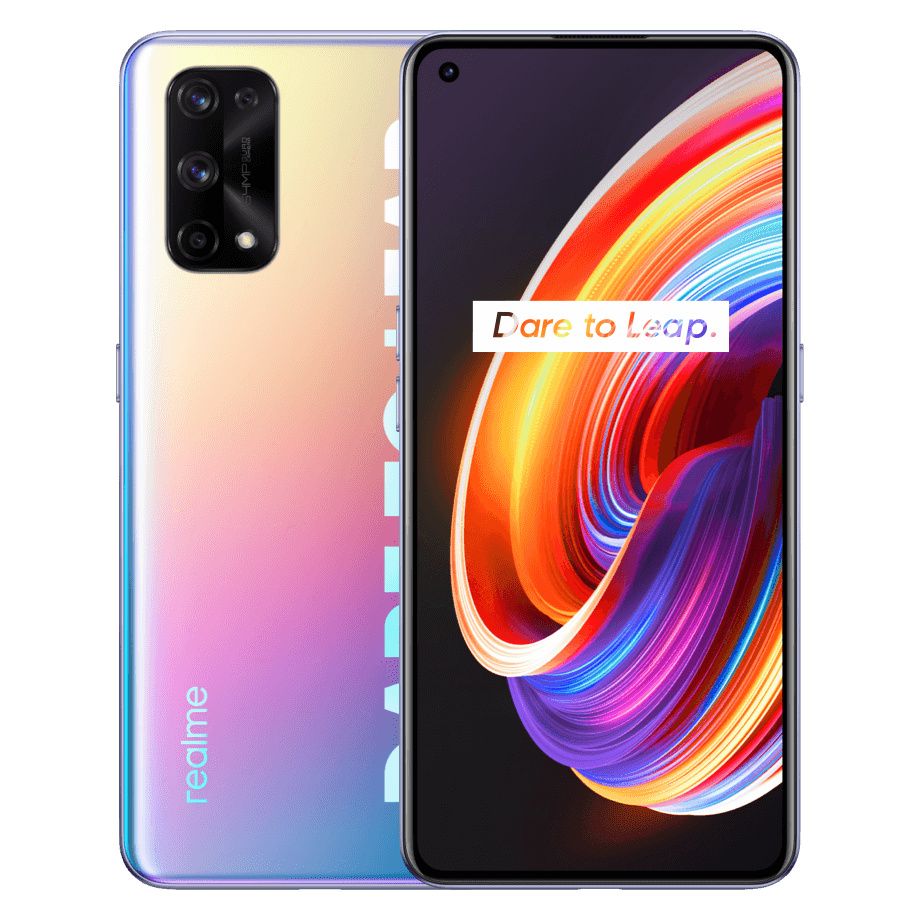
Realme X7 Pro
The Realme X7 Pro offers the Dimensity 1000 Plus SoC at a great price point, making it a good purchase for a mid-range smartphone in 2021. The phone has a well-rounded package to offer, including a 120Hz Super AMOLED display, 64MP Sony IMX686, and 65W SuperDart Charging.
The Realme X7 Pro enters the Indian market at a price point where we usually see the OnePlus Nord hanging around. Against the Nord, the Realme X7 Pro comes out on top, with a lot of +1's that make it a good product. But jump up a few thousand rupees, and you find yourself standing against the Xiaomi Mi 10T with its Snapdragon 865 and a much more practical and versatile camera setup. With my brief time with the Realme X7 Pro, I think the company has delivered another good product that will serve most users well.

